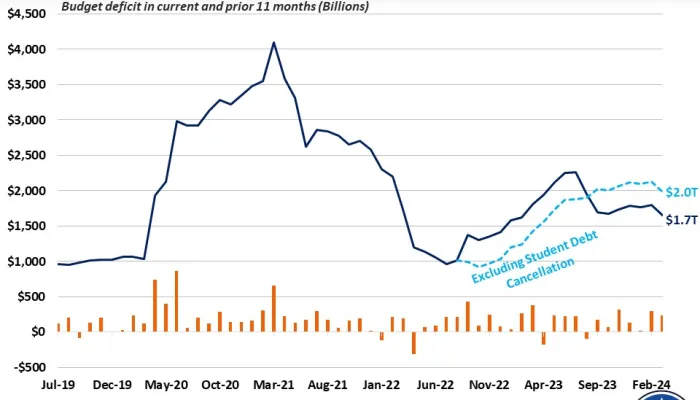Social Security Changes in the Budget Deal
The recently-introduced Bipartisan Budget Act of 2015 tackles a laundry list of items that lawmakers needed to address over this Congress, including the upcoming exhaustion of the Social Security Disability Insurance (SSDI) trust fund. Because the Social Security Trustees and the Congressional Budget Office (CBO) had estimated that the trust fund would run out of reserves by the end of 2016 and in the beginning of Fiscal Year (FY) 2017, respectively, leaders included a payroll tax reallocation to shore up the trust fund. This is coupled with very modest changes to Social Security, including one that would close loopholes in the Old-Age and Survivors' Insurance (OASI) program as well as a number of measures that affect the disability program.
According to estimates from Social Security's Chief Actuary, the changes would improve long-term solvency of the combined OASDI trust fund by 0.04 percent of payroll over 75 years. Over the next 10 years, the Chief Actuary estimates these changes will save the trust funds between $5 billion and $9 billion, and CBO estimates these changes will save about $3 billion. This bill would close 1.5 percent of the 75-year shortfall and reduce total Social Security costs by about 0.1 percent.
Below we outline the major proposals and what their effect would be.
| Social Security Changes | |||||||
|---|---|---|---|---|---|---|---|
| Policy | 10-Year Costs(-)/Savings, Billions |
|
75-Year Actuarial Impact, % of payroll |
||||
| OASI | SSDI | OASDI | OASI | SSDI | OASDI | ||
| Reallocate Funds from OASI to SSDI | -$117 | $117 | $0 | |
-0.03% | 0.03% | 0.00% |
| Require Medical Information for All Determinations | $0 | $2.9 | $2.9 | 0.00% | 0.02% | 0.02% | |
| Close Retirement Benefit Loopholes | $0 | $0 | $0 | 0.02% | 0.00% | 0.02% | |
| Other Changes | $0 | -$0.01 | -$0.01 | 0.00% | <0.01% | <0.01% | |
| Total Impact | -$117 | $119.8 | $2.9 | -0.01% | 0.05% | 0.04% | |
Sources: CBO, SSA Chief Actuary
Reallocation to Extend the SSDI Trust Fund
The budget deal includes a reallocation of payroll tax revenue from the OASI trust fund to the SSDI trust fund. The reallocation would boost the SSDI portion of the payroll tax from 1.8 percent to 2.37 percent in 2016, 2017, and 2018 and reduce the OASI portion from 10.6 percent to 10.03 percent. Lawmakers and the Social Security Chief Actuary say this change will allow the trust fund to pay full benefits until 2022, at which point another funding mechanism will be necessary to ensure solvency, while CBO estimates this will only extend solvency until FY 2021.
Program Integrity Measures
Included in the proposal are select program integrity measures that have bipartisan support. These include an expansion of Cooperative Disability Investigations (CDIs) to all 50 states and territories, which are seen as one of the most effective ways of countering fraud. The proposal also increases penalties for those who participate in fraud, creates a new felony for conspiracy to commit Social Security fraud, prohibits evidence from medical providers who are unlicensed or have been sanctioned, and applies more prohibitions and penalties to beneficiaries who purposefully commit fraud. To fund these proposals, the bill would also increase the amount that is allowed to be allotted for program integrity over the Budget Control Act caps by $484 million over the FY 2017-2020 period. Current law allows these extra appropriations for medical Continuing Disability Reviews (CDRs), and this bill would allow the funds to also be used for CDIs, work CDRs (which differ from medical CDRs), and fraud prosecution.
Demonstration Project Authority
The bill would renew the Social Security Administration's (SSA) authority (which last expired in 2005) to initiate new disability demonstration projects from 2016 to 2021, allowing SSA to test reforms that could promote further attachment to the labor force. Included in this authority is a defined demonstration project that would create another benefit offset demonstration, similar to the already-existing BOND project, that would allow SSA to test different offset thresholds to encourage beneficiaries to attempt work. Currently, beneficiaries immediately lose all of their benefits once they hit the Substantial Gainful Activity (SGA) level of earnings also known as the "cash cliff," which is $1,090 per month in 2015. Unlike the BOND, the new demonstration project's benefit threshold can start below SGA and even at or below $780, the amount considered to be the start of a trial work period. Notably, participation in any demonstration project would be completely voluntary, and beneficiaries could leave the project at any time.
Medical Information Requirement for All Determinations
The largest savings from the Social Security portion of the bill would come from requiring medical information for all disability determinations. This essentially repeals SSA's Single Decision Maker pilot program that streamlined determinations without medical evidence. A June 2015 report from the Social Security Advisory Board recommended that the program be ended due to SSA's inability to gather reliably accurate data to inform its decisions. According to CBO, this requirement would save about $3 billion for Social Security over the next 10 years with an additional $1.2 billion in non-Social Security savings from Supplemental Security Income (SSI) and health programs. The Social Security Chief Actuary estimates that it would save about 0.02 percent of payroll over 75 years.
Closing Retirement Benefit Loopholes
Some savings for the OASI trust fund would come in the form of closing unintended loopholes. Specifically, it would close the "claim and suspend" and "deeming" loopholes that allow married retirees to inflate their benefits. We previously wrote a blog discussing these loopholes. According to the Social Security Chief Actuary, this change would improve long-term solvency by 0.02 percent of payroll.
Other Changes
There are also a number of smaller provisions that make various changes to the SSDI program, including better coordination with the Office of Personnel Management (a provision included in the President's budget), coordination of payroll data with commercial payroll services, expedited hiring of Administrative Law Judges when more are needed, and other small changes. CBO estimates that these changes will save about $380 million over the next 10 years, though only the payroll data change results in savings for Social Security.
* * *
Although the deal contains some positive SSDI reforms, it excludes many additional reforms or improvements in the areas of early intervention and interaction with other programs, such as those included in the McCrery-Pomeroy SSDI Solutions Initiative. It is unfortunate to see Congress miss this opportunity to enact further change and improvement for SSDI beneficiaries, kicking trust fund depletion down the road for six years without addressing long-term solvency. We cannot afford to repeat the experience of the last reallocation in 1994 and fail to follow up with reforms until the trust fund faces depletion again. If the deal does pass both chambers, as seems likely, then Congress should continue the momentum for SSDI changes in order to achieve long-term sustainability and improve the program for all people with disabilities. This legislation should be the start of the discussion about how to improve the SSDI program, not the end.


